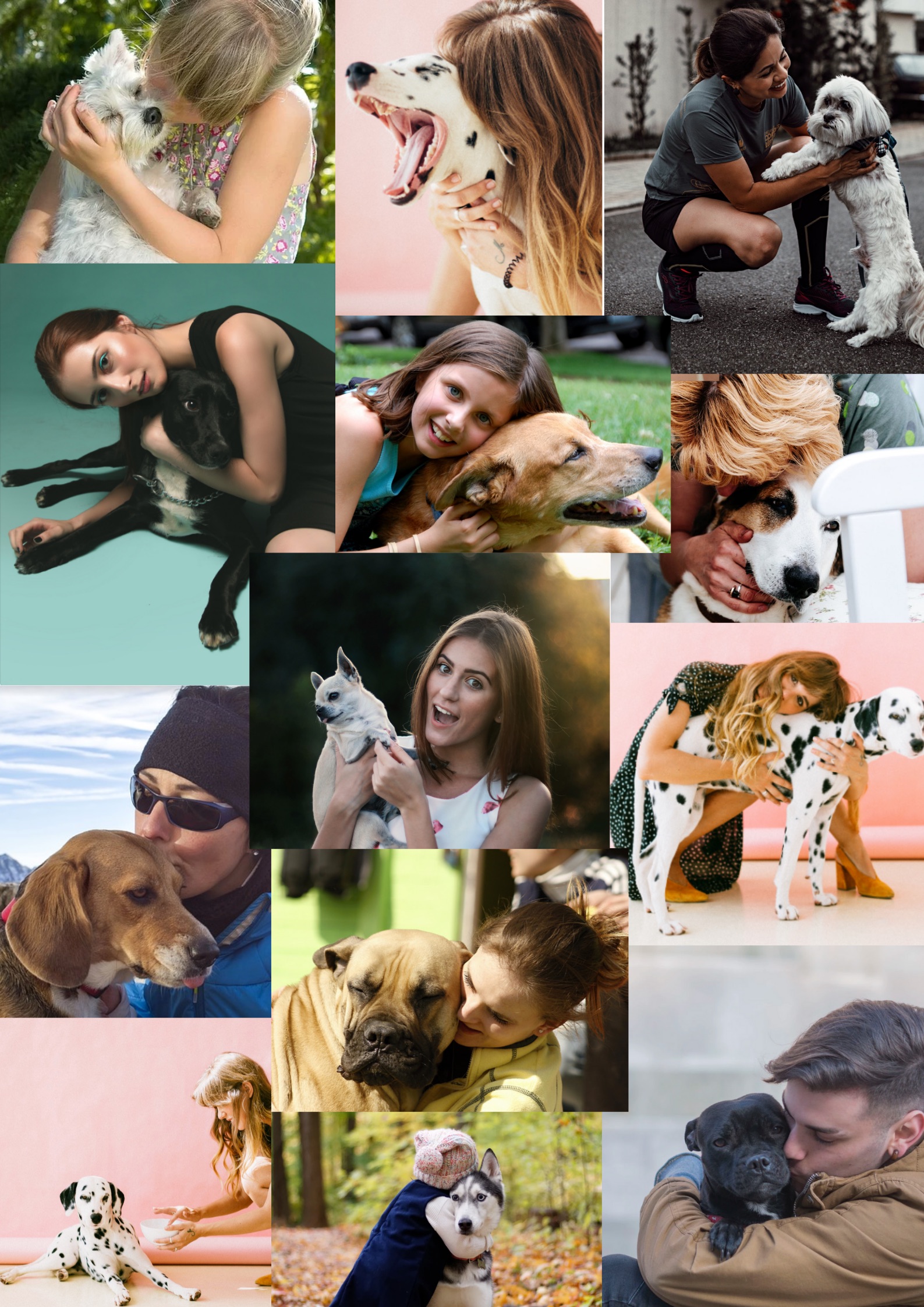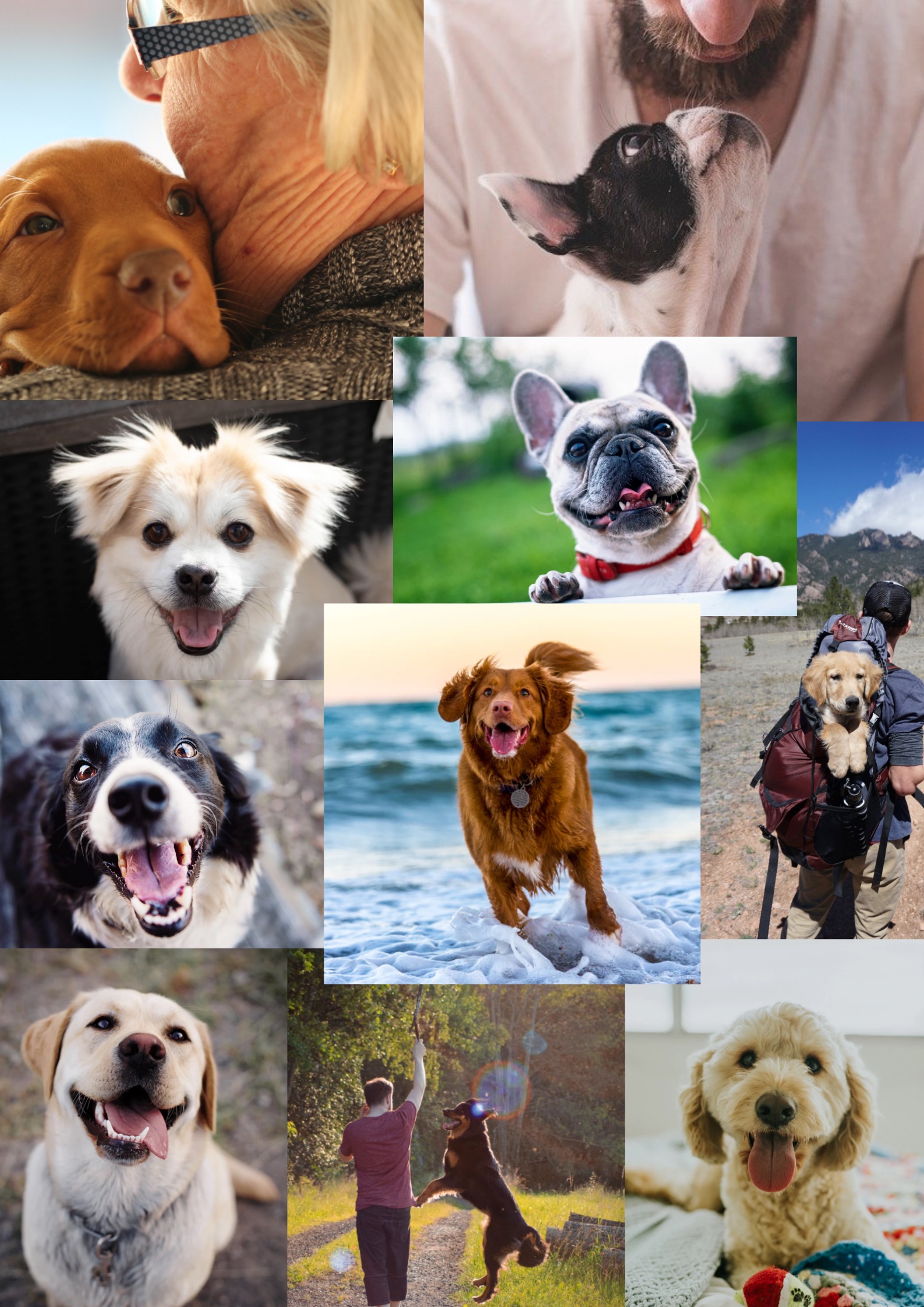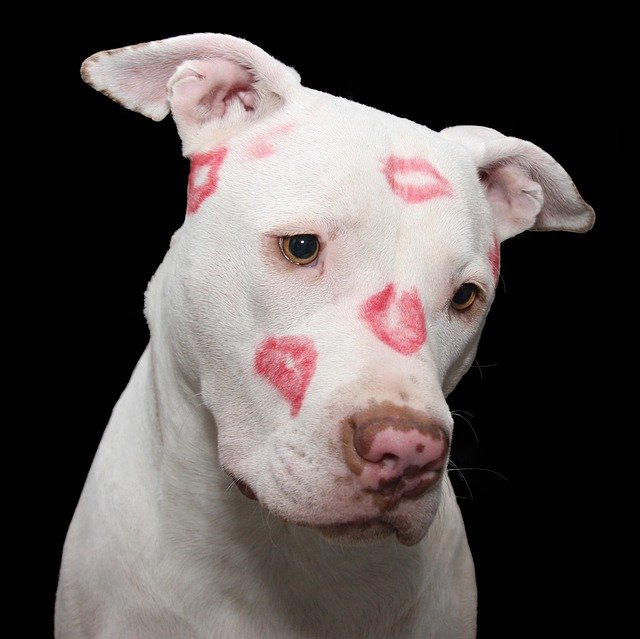Whether you’re into the idea of Valentine’s Day or not, it’s impossible to escape the flood of hearts and images of sharing love.
One ever-present theme loved by photographers and consumers of online images – that’s us – alike is the human–dog hug. We love dogs, and we love to show our affection the way primates know best: by being physical, kissing, and hugging. So what’s wrong with that?
Like other people with an online presence, I often rely on stock photos of dogs for ease of use in blog articles and presentations. Have a look at these images from several popular stock photo providers. (These are just the free ones. I could have filled several more pages with a premium subscription.)
Non-dog people might look at these interactions and see affection; dog-people mostly cringe. Tense facial expressions, wrinkled foreheads, flattened ears, yawning, averted gaze, commissure pulled back, whites of the eyes showing, dilated pupils, body backing away and flicks of the tongue are just a few of the silent ways dogs tell us that they are anything but comfortable.
The trouble is, these images are all around us.
Look for free stock photos using the search terms “dog,” “love,” “friendship,” “affection,” or “hug” and you’ll be served lots of pictures of dogs showing signs of discomfort. Then, when these images are used to illustrate stories of caring relationships with our canine companions, they become identified with our positive feelings. We see love and affection where dogs are trying to tell us to please stop.
Ignore these subtle signs and at best your dog will learn you are an insensitive oaf and benevolently endure your social incompetence; at worst your dog will learn he has to resort to louder communication because you don’t seem to get the message. When dogs snarl, growl, snap or bite, we suddenly become aware of their body language. Things can get unsafe quickly when other people, especially children, imitate your actions and think your dog likes to be kissed and hugged.

For this Valentine’s Day, I propose we show our love for our dogs by asking them what affection feels like for them.
Do this simple 3-second game with me: interact with your dog —for 3 seconds! Petting, scratches, cajoling, hugging, kissing – do whatever you normally* do to show your dog how much you love him. Then stop. What does your dog do? Do you see any of the body language I described above? Does he come back for more? Does he back away? Try something new. Be creative. See how your dog responds.
Luckily for us, dogs are incredibly adaptive and resilient. Many have even learned to enjoy our crude primate advances. So here are a few pictures of smiling dogs with relaxed facial expressions and loose bodies. Notice the smooth foreheads, wide grins, and soft eyes. I’m sorry there are so few people in these images. I tried. Maybe you can do better.
What does your dog look like when he’s showing you how much he loves being with you?
Before you post a photo of yourself and your dog on social media, ask yourself, “Does my dog look like he is enjoying this interaction as much as I am?” Can you share a picture that shows what people and dogs look like when they delight in each other’s company?

*IMPORTANT: Do not play this with strange dogs. If you don’t usually kiss your dog or sling your arms around him in a loving embrace, don’t start now! Some dogs have very canine ways of showing us that they are not happy being touched.
If you notice any of the body language described in the first paragraph, consider it a yellow light. Stop the interaction. If your dog growls or snarls when you interact with him physically, consider it a red light. Get professional help: consult a qualified positive reinforcement-based dog trainer or behaviorist as soon as possible.
DISCLAIMER: By their very nature, these are snapshots. I do not know these dogs or the relationship they have with the people in the pictures. I am not implying these are happy or unhappy dogs. This is simply an illustration of dog body language in the context of human interaction.
SOURCE: free stock photos obtained from canva; unsplash; pexels and pixabay.


